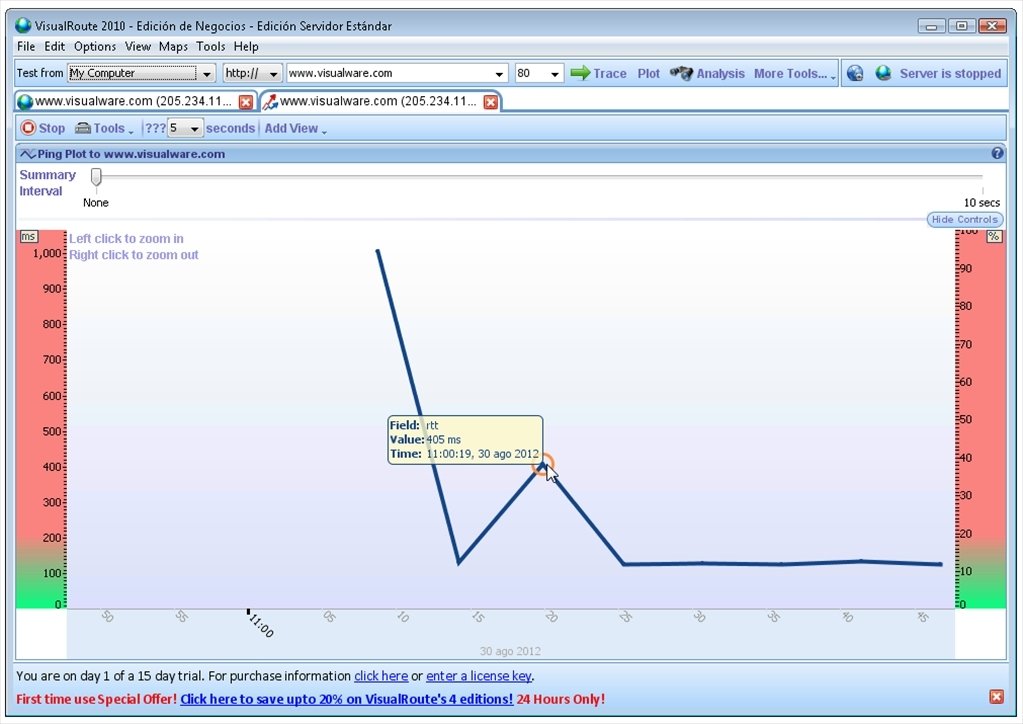
#What server is running visualroute 2010 software
Double check any faulty cable, network card or software on the way.

In those case, those node can only relay the packet but won't answer any information related to their network identity. Regularly, it's possible that a node is actually configured not to send any TIME_EXCEEDED packet back to the origin. We colored in green their return-trip response time (in ms). The blue-colored value confirms the IP of each relaying node. Whenever it's possible, we determine the hostname related to each hop we discover. The maximum hops number is limited to 30. The table under the map gives you synthetic results over each hop of the tested route. You're now able to deep dive in Google Maps the path of a IP packet from our server to any Internet-connected device.

When getting the traceroute results, feel welcome to enlarge the Google Maps by clicking the fullscreen icon in the top-right corner of the tool.

That's how our tool can measure the response time of each node within the path of an IP packet. When a packet reaches a network node and gets its TTL credit down to 0, it will stop there and elicit a TIME_EXCEEDED response to be sent back to the ping's origin (G Suite.Tools). Thus, each probe will incrementally reach one relay further than the previous ping. In this networking context, the TTL defines the maximum number of hops a packet can be relayed through during its travel over the Internet. The traceroute tool will then send from 1 to 30 IP packets to the target, incrementing the Time-To-Live (TTL) for each probe ping, starting from TTL 1. Insert the complete (sub.)domain, IPv4 or v6 to which you want to perform a visual traceroute test and press 'TRACE'.
#What server is running visualroute 2010 full
In addition to determining the response time of each hop the packet is travelling through, you're now able to visualize in full screen the path of each probe ping between our server and the tested IP address within Google Maps in a instant.īy tracing the actual route between G Suite.Tools' server and yours, you can decide in which way to optimize your network setup to lower response times in your application, service or website. G Suite.Tools' visual traceroute online app makes it easy to precisely pinpoint weak nodes impacting your global network performance. The objective of a graphical traceroute is to discover each server relaying your IP packet from point to another, and to measure the return-trip delay between the probing host (here G Suite.Tools) and each relay on the packet path.


 0 kommentar(er)
0 kommentar(er)
